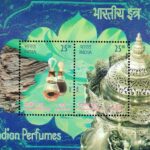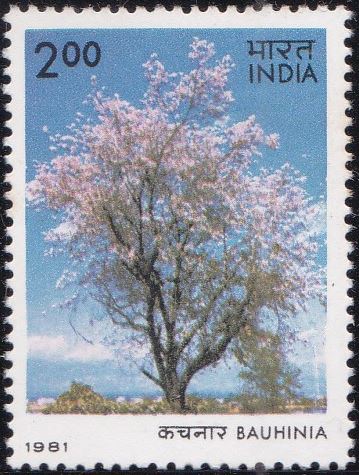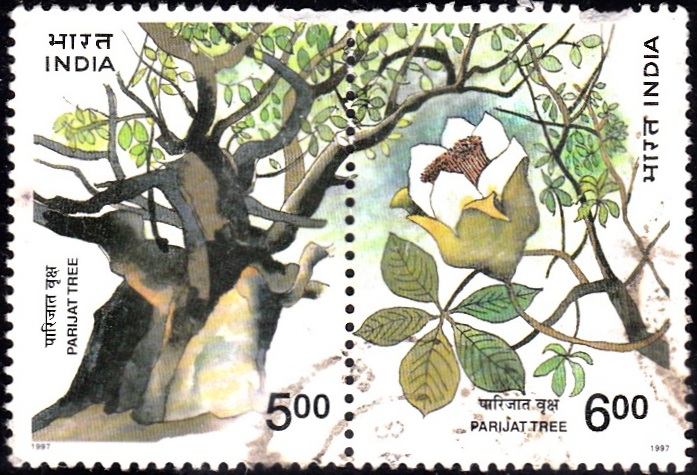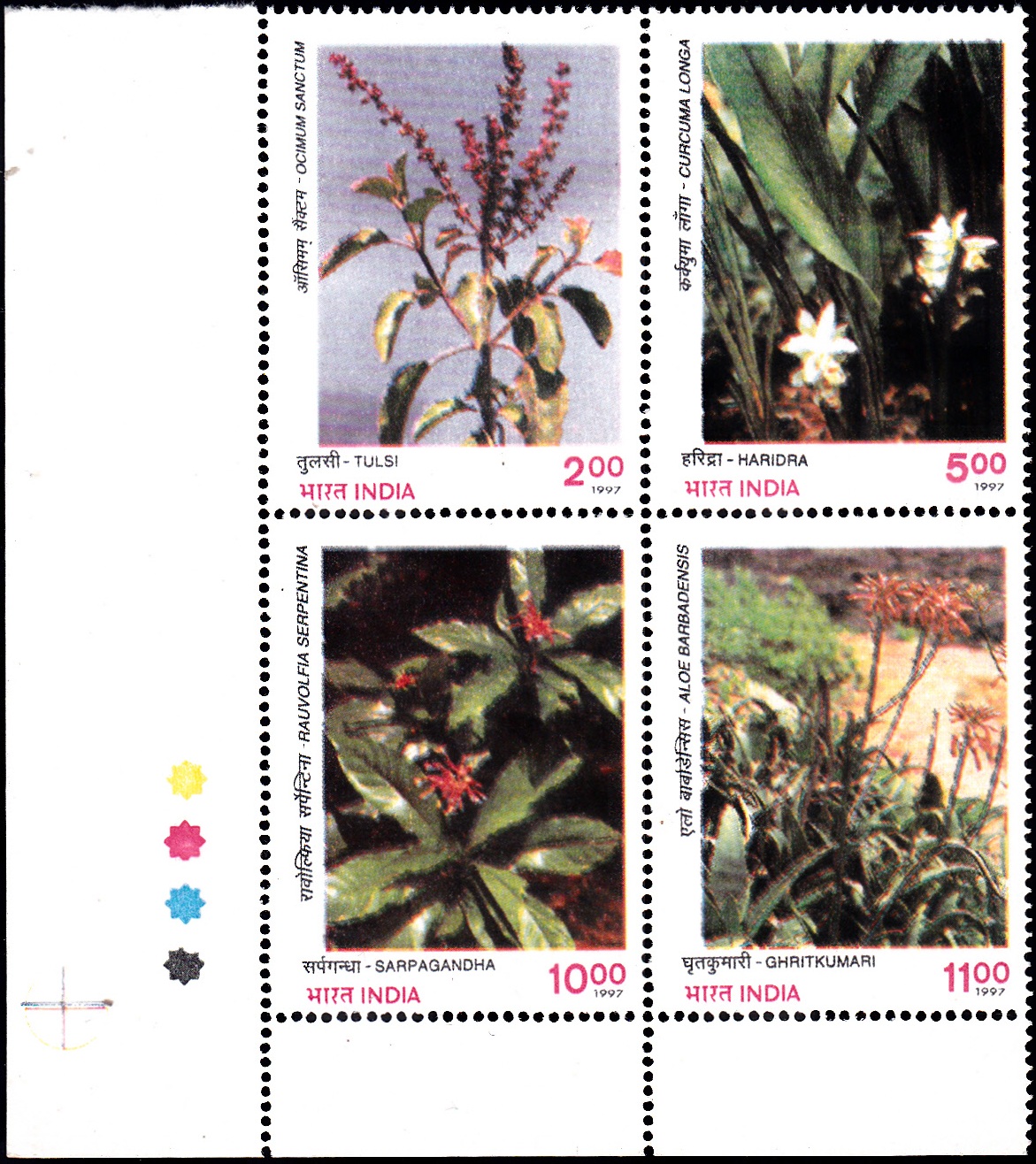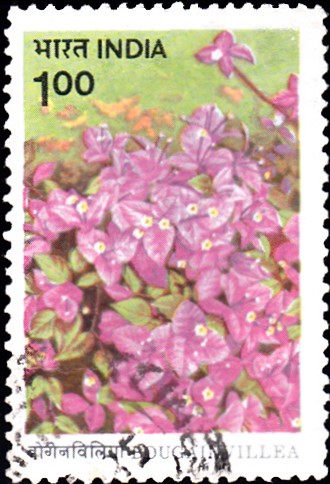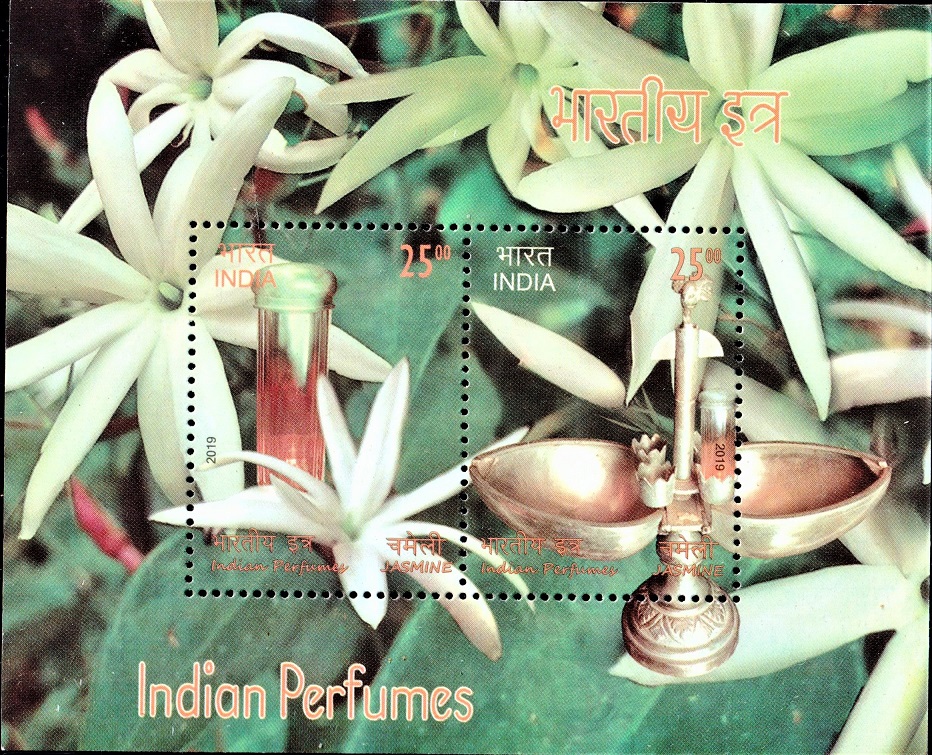
Indian Perfumes – Sandalwood and Jasmine
2 Miniature Sheets consisting of 4 nos. of scented stamp on the Perfumes of India : Sandalwood and Jasmine :
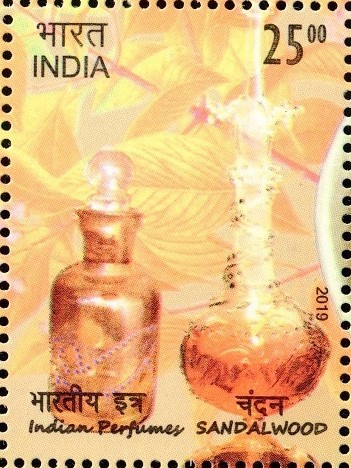
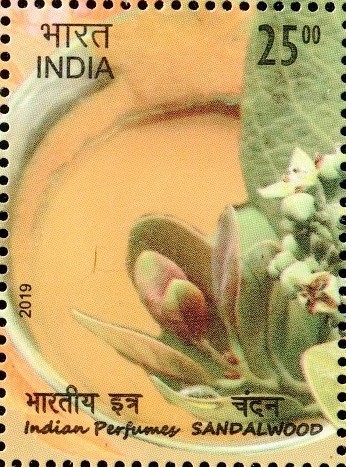
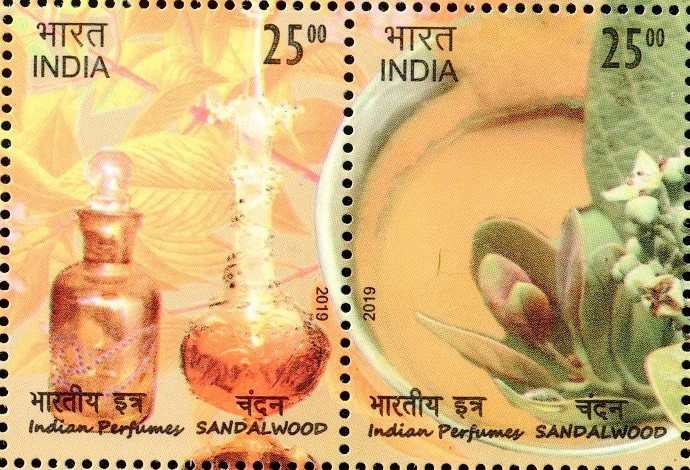
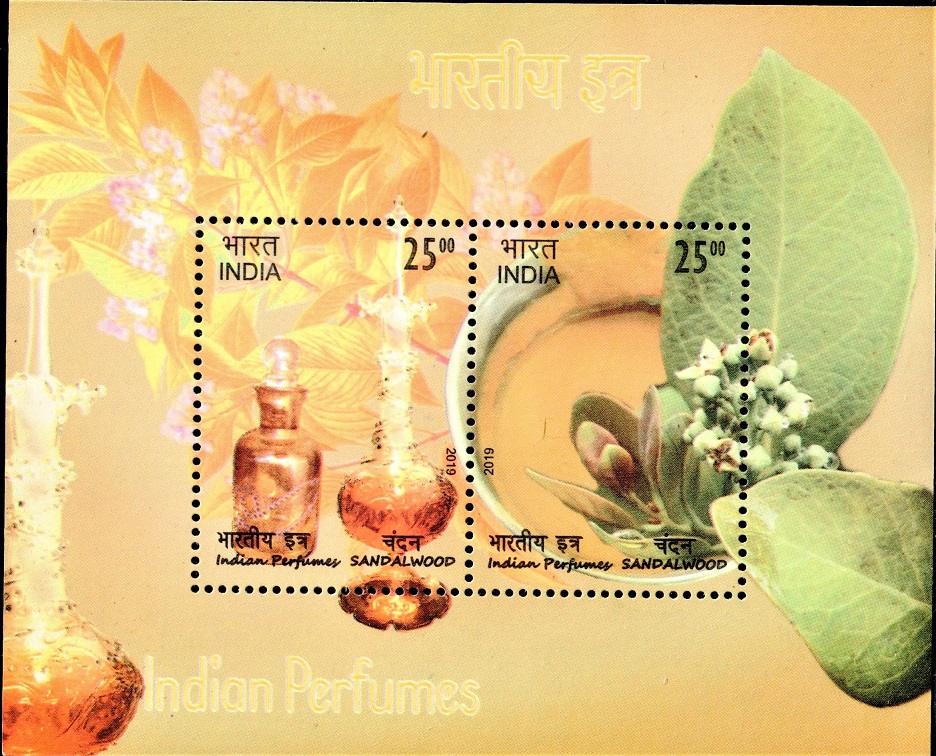
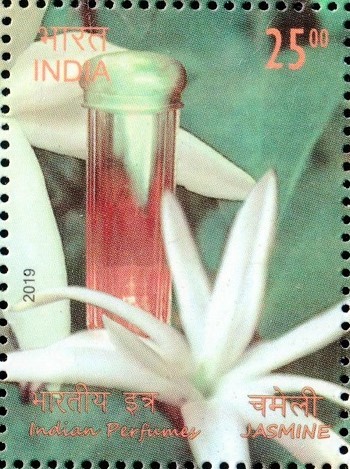
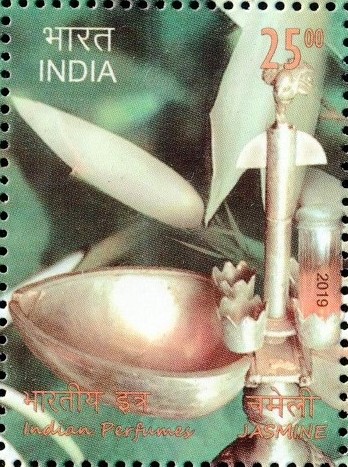
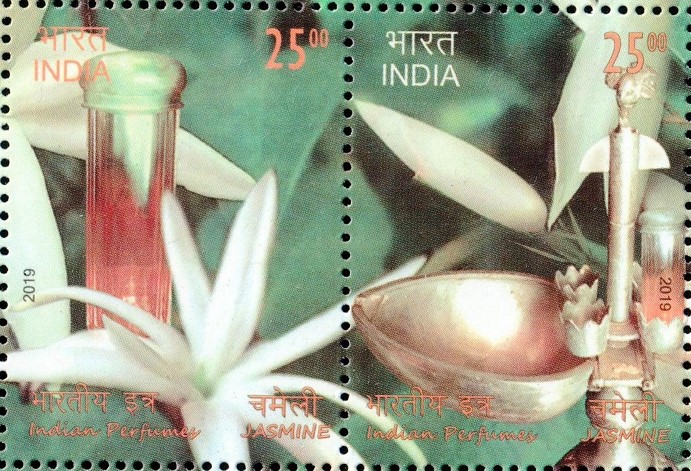
 Issued by India
Issued by India
Issued on Aug 1, 2019
Issued for : Department of Posts is pleased to release a set of two fragrant Commemorative Postage Stamps each and a Miniature Sheet each on Sandalwood and Jasmine as part of the series on Indian Perfumes.
Credits :
Stamps/Miniature Sheets/First Day Cover/Information Brochure : Smt Bharati Mirchandani
Cancellation Cachet : Smt Nenu Gupta
Type : Miniature Sheet, Mint Condition
Colour : Multi Colour
Denomination : 2500 Paise (2) and 2500 Paise (2)
Stamps Printed : 8.0 Lakh each
Miniature Sheets Printed : 2.0 Lakh each
Printing Process : Wet Offset
Printer : Security Printing Press, Hyderabad
About :
- Indian perfumery dates back to the Indus Valley Civilization running through the Gupta period up to the Mauryan periods. The great poet Kalidas, makes detailed reference to the use of fragrances by the Protagonist of his plays. In 1469, a ruler Ghiyath Shah the Sultan of Malwa, patronised the book The Ni’matnama, or the Book of Delights, which records two of the ancient world’s most sophisticated traditions of perfumery: that emanating from Persia and Arabia, on the one hand and the ancient Indian tradition that goes back to the time of the Vedas on the other. In the heart of the old city of Delhi, in Chandni Chowk, as also in the old cities of Agra, Lucknow and Hyderabad, there still exist perfumers whose family had been engaged in perfumery and who continue the ancient Indian tradition of ittar-making: oil-based scent manufacturing.
- SANDALWOOD is heavy, yellow and fine-grained and unlike many other aromatic woods, it retains its fragrance for decades. Sandalwood oil is extracted from the woods for use. Both the wood and the oil produce a distinctive fragrance that has been highly valued for centuries in India. Warm, woody and comforting, sandalwood has a lingering quality that makes it the perfect sophisticated unisex fragrance. Its warm notes make it the ideal winter scent and, combined with floral accords, it adds a spicy quality to summer perfumes. Smooth, rich and essentially soft, its notes work well with accords of vanilla, amber, patchouli, lavender and cedar wood. Sandalwood oil has a distinctive soft, smooth, creamy and milky precious-wood scent. It imparts a long-lasting, woody base to perfumes. When used in smaller proportions in a perfume, it acts as a fixative, enhancing the longevity of other, more volatile, materials in the composite. Sandalwood is also a key ingredient in the floral fragrance family when combined with white florals such as jasmine, gardenia, plumeria, orange blossom, tuberose, etc. Sandalwood oil is widely used in India in the cosmetic and perfumery industry since ancient times.
- JASMINE is one of the oldest known and most widely-used botanical scents and is a popular household perfume. Jasmine ittar was the favourite perfume of the Nizams of the Hyderabad State. The perfume is derived from the flower of shrubs and vines in the olive family (Oleaceae). Indian Jasmine grows mainly in Uttar Pradesh, West Bengal, Western Ghats and Southern India. It is known as Juhi (Hindi), Jui (Bengali), Usimalligai (Tamil) etc. and holds great significance in Indian culture. Jasmine has a sweet, warm, floral scent that can be both slightly heady and relaxing with fruity undertones. The fragrance of jasmine is synonymous with our culture in the forms of spirituality, tradition and also medicine. Jasminum sambac fragrance has rejuvenating, boosting and energizing properties, which makes it a natural fragrance, while Jasminum grandiflorum is one of the most prominent scents and it has highly unique and incredibly intense aroma. Essential oil in flowers is extracted through enfleurage/solvent methods which is widely used for production of jasmine perfume in India. The perfume is deep brown with a golden tinge with a thick consistency, having a strong aroma and generally blends well with all oils. Jasmine has been concluded as the “King of Oils”. It is also interesting to note that it takes 8,000 carefully hand-picked blossoms to produce 1 gram (about 1 ml.) of Jasmine Absolute.
- Text : Shri Pallab Bose.


